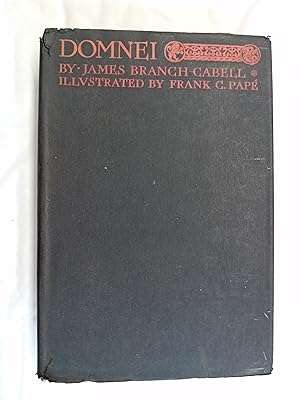
Domnei. A Comedy of Woman-Worship (important author)
Check my rate
| Main centres: | 1-3 business days |
| Regional areas: | 3-4 business days |
| Remote areas: | 3-5 business days |

| Main centres: | 1-3 business days |
| Regional areas: | 3-4 business days |
| Remote areas: | 3-5 business days |
Published by John Lane The Bodley Head Limited, London, 1930, hardcover, illustrated,252 pages, 17 cms x 24.2 cms x 4 cms, condition: as new.
The author, James Branch Cabell (1879 1958) was an American author of fantasy fiction and belles-lettres. Cabell was well-regarded by his contemporaries, including H. L. Mencken, Edmund Wilson, and Sinclair Lewis. His works were considered escapist and fit well in the culture of the 1920s, when they were most popular. For Cabell, veracity was "the one unpardonable sin, not merely against art, but against human welfare."
Although escapist, Cabell's works are ironic and satirical. Mencken characterized him as "really the most acidulous of all the anti-romantics. His gaudy heroes ... chase dragons precisely as stockbrockers play golf." According to Louis D. Rubin, Cabell saw art as an escape from life, but found that, once the artist creates his ideal world, it is made up of the same elements that make the real one.
Cabell was a major influence on Neil Gaiman, acknowledged as such in the rear of Gaiman's novels Stardust and American Gods.
Robert A. Heinlein was greatly inspired by Cabell's boldness, and originally described his own book Stranger in a Strange Land as "a Cabellesque satire". A later work, Job: A Comedy of Justice, derived its title from Cabell's Jurgen and contains appearances by Jurgen and the Slavic god Koschei.
Jack Vance's Dying Earth books show considerable stylistic resemblances to Cabell; Cugel the Clever in those books bears a strong resemblance, not least in his opinion of himself, to Cabell's Jurgen.
Charles G. Finney's fantasy The Circus of Dr. Lao was influenced by Cabell's work. The Averoigne stories of Clark Ashton Smith are, in background, close to those of Cabell's Poictesme